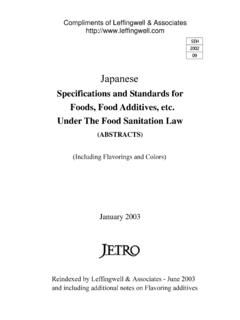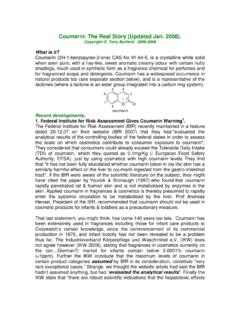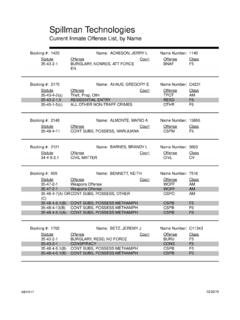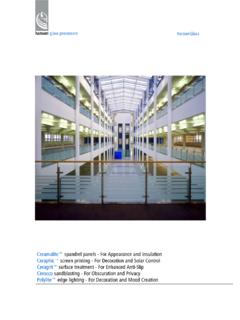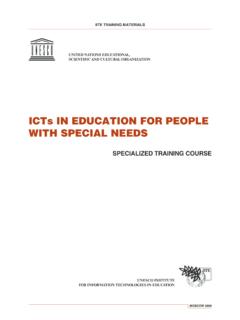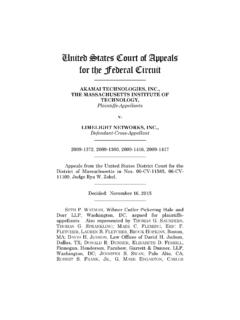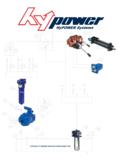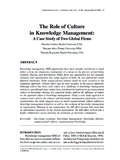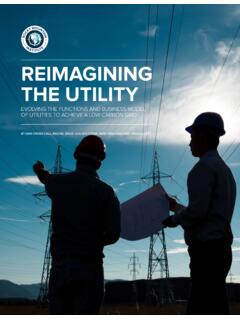Transcription of Flavours - Leffingwell & Associates
1 OH __,:;. Flavours & fragrances from Although it was priced at about $ 700/kg, the t iming was perfect, considering t he disastrous vanilla bean crisis of 2003. Vanillyl alcohol oxidase ::: C02H 1,.-:::: __,:;. In 2015, a Conagen/Givaudan patent application disclosed a new process for producing ferulic acid used for vanillin biosynthesis. In this case, ferulic acid is Eugenol Comferyl alcohol Extraction of: wheat bran; rice bran; corn bran and/or corn cobs or grains / OH Ferulic acid [oxid I Vanillin made f rom p-coumaric acid by a t wo-step enzymatic process, encompassing hydroxylation and 0-methylation, with caffeic acid as an intermediate met abolite.]
2 This is potentially a significant advance, as p-coumaric acid accompanies ferulic acid at high levels in waste products li ke maize cobs, brewers' spent grain and rice 1 17 Figure 3 -Ferulic acid & eugenol processes for natural vanillin Also in 2015, BASF disclosed an improved biocat alytic process for producing vanillin from ferulic acid based on genetically engineered Pseudomonas strains, while in 2009 Shanghai Apple had developed an improved process from ferulic acid using a new a Streptomyces strain. In the same vein in 2014, Mane introduced its Sense Capt ure Vanillin obtained by an improved bioconversion of Figure 3 illustrates the eugenol and fe rulic acid routes.
3 On the production of patchouli oil to improve its own supply chain and revenues for farmers. Givaudan's patchouli oil sust ainability programmes in Indonesia and Borneo also reflects this type of industry activity. Vanilla Vanillin was first isolated from vanilla extract in In 1874, Tiemann and Haarmann were able to prepare vanillin by the oxidation of coniferin (coniferyl alcohol !3-D-glucoside) present in softwood pine species. This led to t he formation in 1875 of Haarmann & Reimer (now part of Symrise) for the commercial production of vanillin.
4 By 1876, t hey had developed syntheses from both eugenol and Subsequently, o ther processes have been employed t o produce synthetic vanill in from eugenol, lignin and guaiacol-glyoxalic acid. Because of environmental concerns, however, most of t he vanillin producing facilities using lignin-containing waste li quor from paper plants have ceased operation. The guaiacol-glyoxalic acid route is now used ext ensively in Vanilla and vanill in are among the most important F&F products in the world, w ith a t otal market value of about $600 million and volume of about 18,000 tonnes.
5 Only a small fraction of this consists of natural vanilla or natural vanillin. The ice cream and chocolat e industries together comprise 75% of the market for vanillin as a flavouring, w ith smaller amounts being used in confectionery and baked 1 In the last two decades, consumers and marketers have increasingly expressed the desire for natural f lavours in their products. For example, in February 2015, Nestle USA announced that it will eliminate all artificial colours and f lavours from its chocolates by the end of 2015 in response to consumer preference for natural ingredients.
6 This follows similar moves by the company in other parts of t he world. However, in the case o f vanilla, and vanillin, the very high cost of supplying 'natural' has been a major challenge for the flavour industry. In the case of vanill a extract, the price is dramatically affected by the cost of vanill a beans. As Madagascar export s about 80% of the world's supply, factors like cyclones, price to farmers, political turmoil and crop disease have historically caused some major price This was especially true in 2003, when vanilla bean prices rose to about $400/kg and then dropped to $32/kg in 2005.
7 As cured vanilla beans cont ain about 2% vanillin, even at a more normal $25/kg the natural vanillin portion would cost at least $1 ,250/kg, compared to $16/kg f or synthetic vanill in -hence the int erest in bio-based natural vanill in production at a reasonable price. In 1977, Tasada reported that a soil microorganism, tentatively identified as a Corynebacterium sp. and a Pseudomonas sp. converted eugenol to ferulic acid and vanill The first patent on production of natural vanill in appeared in 1991 from Haarmann & Reimer, describing a process of converting isoeugenol or eugenol to vanillin using microorganism strains of Serrati sp.
8 , Enterobacter sp. or Klebsiella Numerous publications and patents on bio-based vanillin from either ferulic acid or eugenol soon followed these discoveries. 15 In 2000, Rhodia (now part of Solvay) introduced Rhovanil Natural*, a natural vanillin produced from ferulic acid based on technology OH In 1998, John Frost's group at t he University of Michigan published the Synthesis of vanillin from glucose. This laid the groundwork for the Evolva-IFF collaboration for the production of natural vanillin (Figure 4).19 As vanilli n is toxic to the micro-organisms employed, the process forms vanill in !
9 3-D-glucoside, which is later hydrolysed to vanill in. IFF began the use o f commercial quantities of this material in vanilla-f lavoured products in 2014. In addition, companies such as Symrise, Firmenich, Takasago and Givaudan have active sustainability programmes with local vanilla bean farmers to improve both agricultural practices and wages in key producing areas because natural vanillin does not totally replicate the characteristic flavour profiles of high quality vanilla extracts. OH HO~OH : OH HO,r . O,rf HO OH ---lt"OH ..-:: 0 D Giucose Vanillin 13-D glucoside 0 Schizosaccharomyces pombe Erthrose 4 phosphate 0 ~0 OMT ::: ACAR -1 -OCH.
10 -:::: OH OH OH Vanillin Protocatechuic aldehyde Figure 4-IFF-Evolva process for natural vanil lin 3 Dehydroshikimic acid Protocatechuic acid "JJ Follow us on Twitter May 2015 Speciality Chemicals Magazine 33 Flavours & fragrances Geranylgeranyl diphosphate (GGPP) ~H H OPP __ sc_la_re_ol_ W oH Synthase Labdenediol diphosphate (LDPP) Sclareol Panchapagesa Murali of Evolva pointed out that the biotech sector is currently addressing the 'low hanging fruit ', but complex offerings may logically follow. Toine Janssen of lsobionics, which produces the important Cryptococcus sp.
